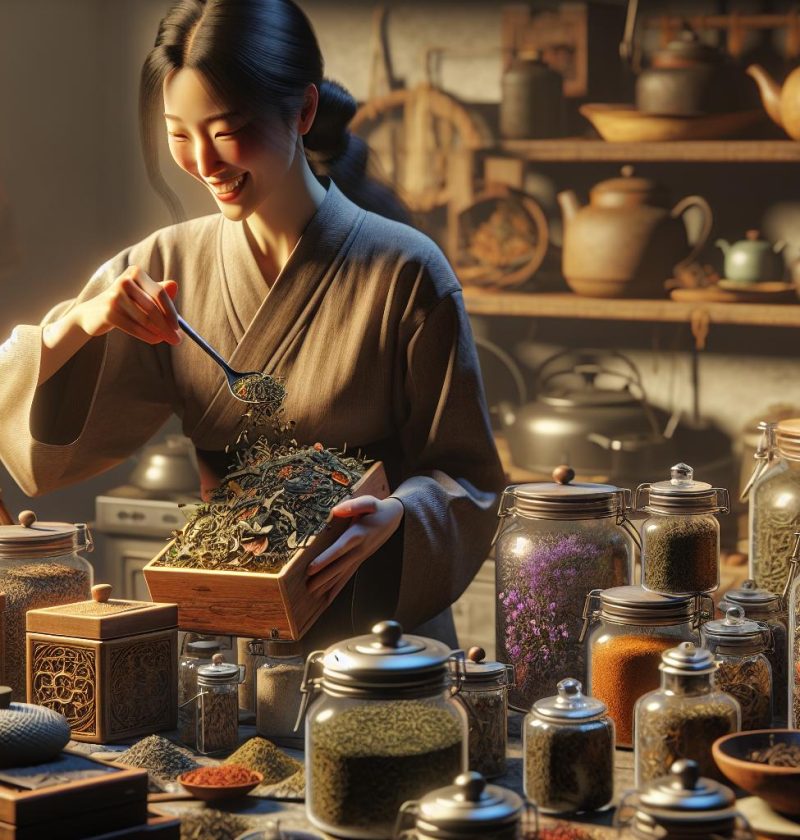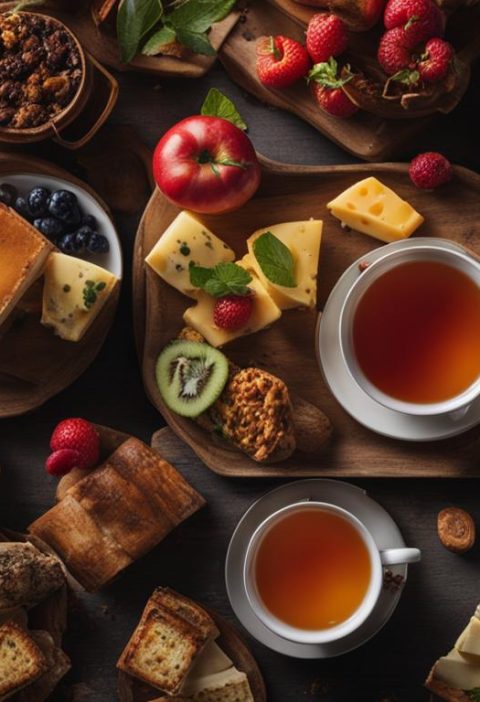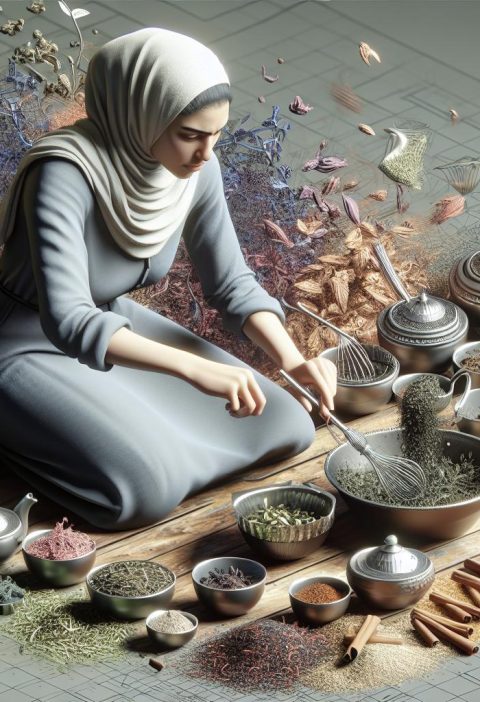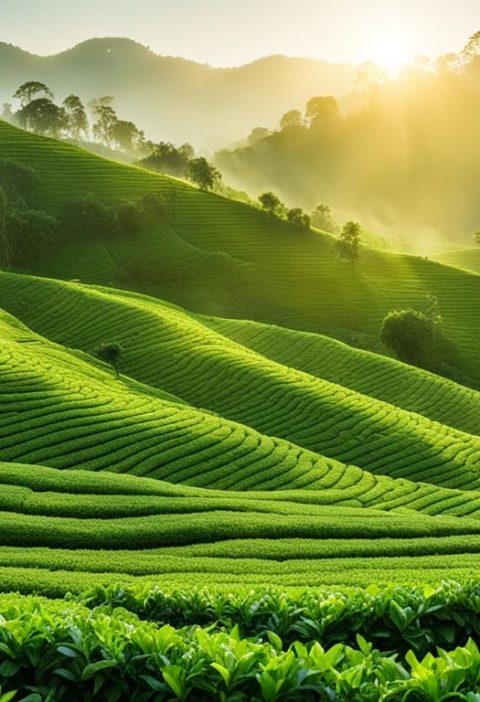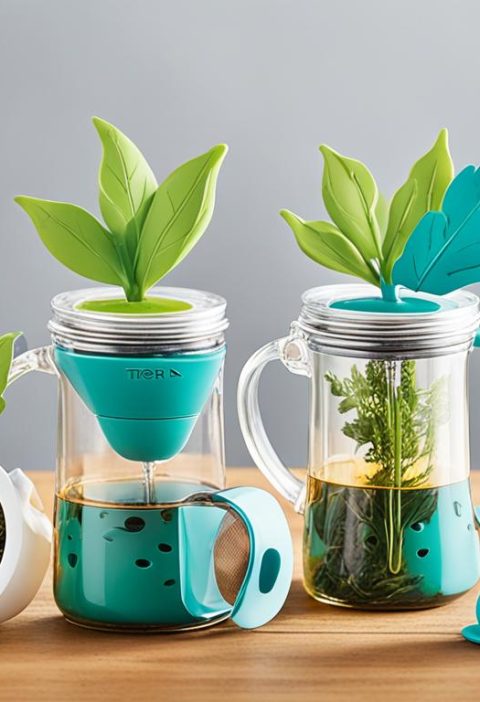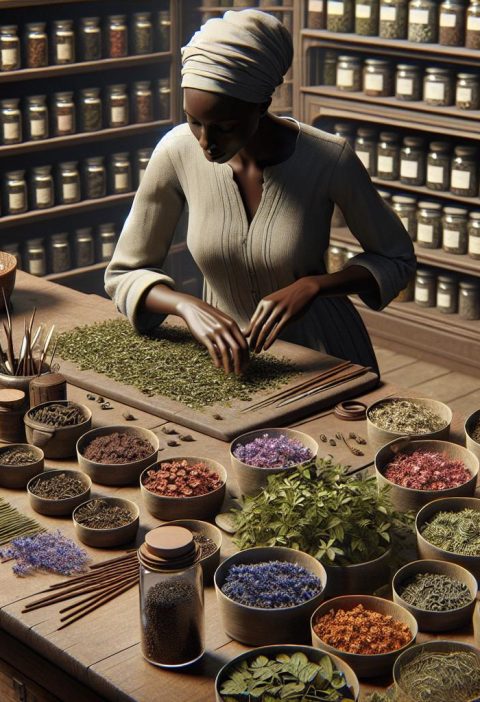So, we’re diving into the world of DIY loose leaf tea combinations. Whether you’re a tea aficionado looking to elevate your tea game or a newbie eager to explore the art of blending, we’ve got you covered. Crafting your own unique tea blends is not only a fun and creative endeavor but also allows you to tailor your brews to suit your taste preferences perfectly.
Benefits of Creating Your Own Tea Blends
Crafting your personalized tea blends comes with a host of benefits that cater to various tea enthusiasts, from novices to seasoned connoisseurs. Let’s delve into the advantages of embarking on this delightful journey of tea blending.
For Beginners: Getting Started on Your Tea Blending Adventure
- Tailored to Taste: You have full control over the flavor profile to create teas that perfectly suit your preferences.
- Budget-Friendly: Making your blends can be more cost-effective than purchasing pre-made options, especially as you experiment with different ingredients.
- Health Benefits: Utilizing fresh, natural ingredients allows you to prioritize health and wellness in your tea choices.
- Creative Expression: Tea blending serves as a creative outlet, enabling you to experiment and discover unique combinations.
For Intermediate Blenders: Elevating Your Tea Experience
- Customized Aromas: By blending teas, herbs, and spices, you can craft aromatic brews that tantalize your senses.
- Unique Gifts: Share your love for tea by gifting personalized blends to friends and family, showcasing thoughtfulness and creativity.
- Culinary Exploration: Delve into the world of flavors by experimenting with diverse ingredients and refining your blending techniques.
- Mood Enhancement: Tailoring teas to match different moods or occasions adds a personalized touch to your brewing sessions.
- Complex Flavor Profiles: Develop intricate blends that harmonize a myriad of flavors, showcasing mastery in tea blending.
- Therapeutic Benefits: Explore the therapeutic properties of herbs and teas to create blends that cater to specific wellness goals.
- Culinary Pairing: Harness the art of tea pairing with food, elevating dining experiences and creating harmonious flavor combinations.
- Tea Rituals: Craft blends that enhance mindfulness practices, creating a deeper connection between tea brewing and self-care.
Embrace the art of tea blending and unlock a world of flavor possibilities tailored to your preferences and creativity. Let’s embark on this flavorful journey together, exploring the endless delights of personalized tea blends.
Essential Tools for DIY Tea Blending
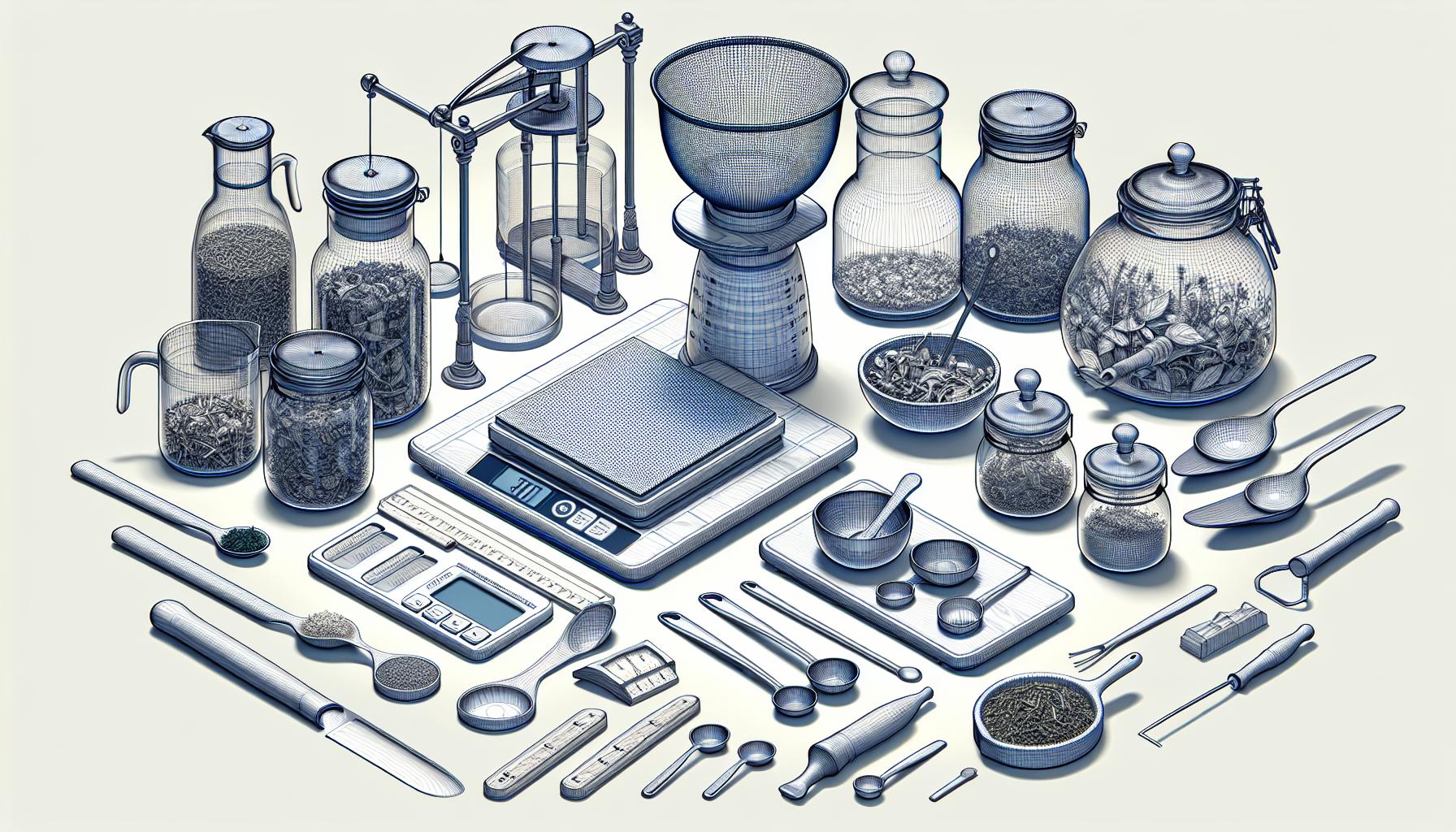
When it comes to creating your own unique loose leaf tea combinations, having the right tools at your disposal can make the process smoother and more enjoyable. Whether you’re a beginner looking to dip your toes into the world of tea blending or an experienced enthusiast seeking to elevate your craft, having the essential tools is crucial. Here’s a breakdown of the must-have tools for DIY tea blending based on your experience level:
For Beginners: Getting Started on the Right Foot
- Tea Scale: To ensure precision in your tea blends.
- Infuser or Strainer: For steeping and filtering your loose leaf tea blends.
- Glass Jars or Containers: Ideal for storing your creations.
- Measuring Spoons: Essential for accurate tea measurements.
- Tea Thermometer: Helps control water temperature for optimal brewing.
For Intermediate Blenders: Enhancing Your Blending Skills
- Tea Timer: Perfect for steeping teas for the right duration.
- Mortar and Pestle: Useful for crushing herbs and spices.
- Tea Flavor Wheel: A tool to help identify and describe different flavors.
- Scented Oils or Sprays: For adding aromas to your blends.
- Tea Tasting Set: Enhances the experience of sampling and evaluating your blends.
- Digital Moisture Meter: Assists in determining tea freshness and quality.
- Hue Meters: Helps in color grading teas for visual appeal.
- Lab-Scale: For precise measurements and experimentation.
- Flavor Extracts: Enhance the complexity of your blends with concentrated flavors.
- Microscope: Enables close examination of tea leaves and ingredients.
Selecting the Perfect Base Tea
When it comes to creating your DIY loose leaf tea blends, Selecting the Perfect Base Tea is crucial. Whether you’re a novice or a seasoned tea blender, the base tea sets the foundation for your unique creation. Let’s dive into some tailored recommendations for different levels of expertise:
For Beginners: Mastering the Basics
For beginners just starting on their tea blending journey, we recommend opting for versatile and forgiving base teas. Some great options include:
- Green tea: Known for its fresh and grassy notes, green tea provides a gentle base for blending.
- White tea: Delicate and subtle, white tea can complement a variety of flavors without overpowering them.
- Herbal tea: Non-caffeinated herbal teas like chamomile or peppermint offer ample room for experimentation.
Start by experimenting with small batches and get a feel for how different base teas interact with added ingredients. Remember, practice makes perfect!
For Intermediate Blenders: Enhancing Your Blend
Intermediate blenders have some experience under their belt and are ready to elevate their tea blends. Consider exploring more complex base teas to add depth and nuance to your creations:
- Oolong tea: With its unique flavor profiles ranging from floral to toasty, oolong tea can bring a sophisticated touch to your blends.
- Black tea: Bold and robust, black tea serves as a robust base that can stand up well to strong flavors.
- Pu-erh tea: Earthy and rich, pu-erh tea adds a distinctive depth to your blends.
Experiment with blending different base teas together to create harmonious flavor profiles that showcase your blending skills.
For Experts: Advanced Techniques and Experimentation
Expert tea blenders are ready to push the boundaries and create truly exceptional blends. Consider mixing rare or specialty base teas for an extraordinary tea experience:
- Matcha: This vibrant powdered green tea offers a unique and intense flavor that can take your blends to new heights.
- Yellow tea: Rare and delicate, yellow tea provides a subtle and refined base for intricate blends.
- Aged teas: Dive into the world of aged teas like aged white tea or aged Pu-erh for complex and nuanced flavor profiles.
Combine your expertise with a spirit of experimentation to craft blends that surprise and delight even the most discerning tea enthusiasts. Let your creativity soar!
Adding Flavorful Herbs and Spices
When it comes to jazzing up your DIY loose leaf tea blends, adding flavorful herbs and spices can take your creations to the next level. Whether you’re a beginner looking to dip your toes into the world of tea blending or an expert seeking new inspiration, incorporating herbs and spices can truly elevate the aroma and taste of your teas. Here are some tailored recommendations based on your experience level:
For Beginners: Embracing the Basics
- Start simple and experiment with common herbs and spices like cinnamon, ginger, and peppermint.
- Try blending these herbs and spices with gentle base teas such as green tea or white tea to ease into the process.
For Intermediate Blenders: Elevating Your Brews
- Delve into more intricate flavor profiles by incorporating herbs like lavender, chamomile, or lemongrass along with spices such as cardamom or cloves.
- Pair these herbs and spices with medium-bodied base teas like oolong or black tea to create harmonious and layered blends.
- Explore rare and exotic herbs like hibiscus flowers, butterfly pea flower, or elderflower, combined with bold spices such as star anise or Sichuan peppercorns.
- Challenge yourself by matching these potent herbs and spices with unique base teas such as matcha, yellow tea, or aged teas to craft avant-garde and innovative concoctions.
By incorporating a diverse array of herbs and spices into your DIY loose leaf tea blends, you can unleash a spectrum of flavors and aromas that will captivate your senses and delight your taste buds. Whether you’re a novice or a seasoned expert, the world of tea blending is yours to explore and savor.
Storing and Brewing Your Custom Tea Blends
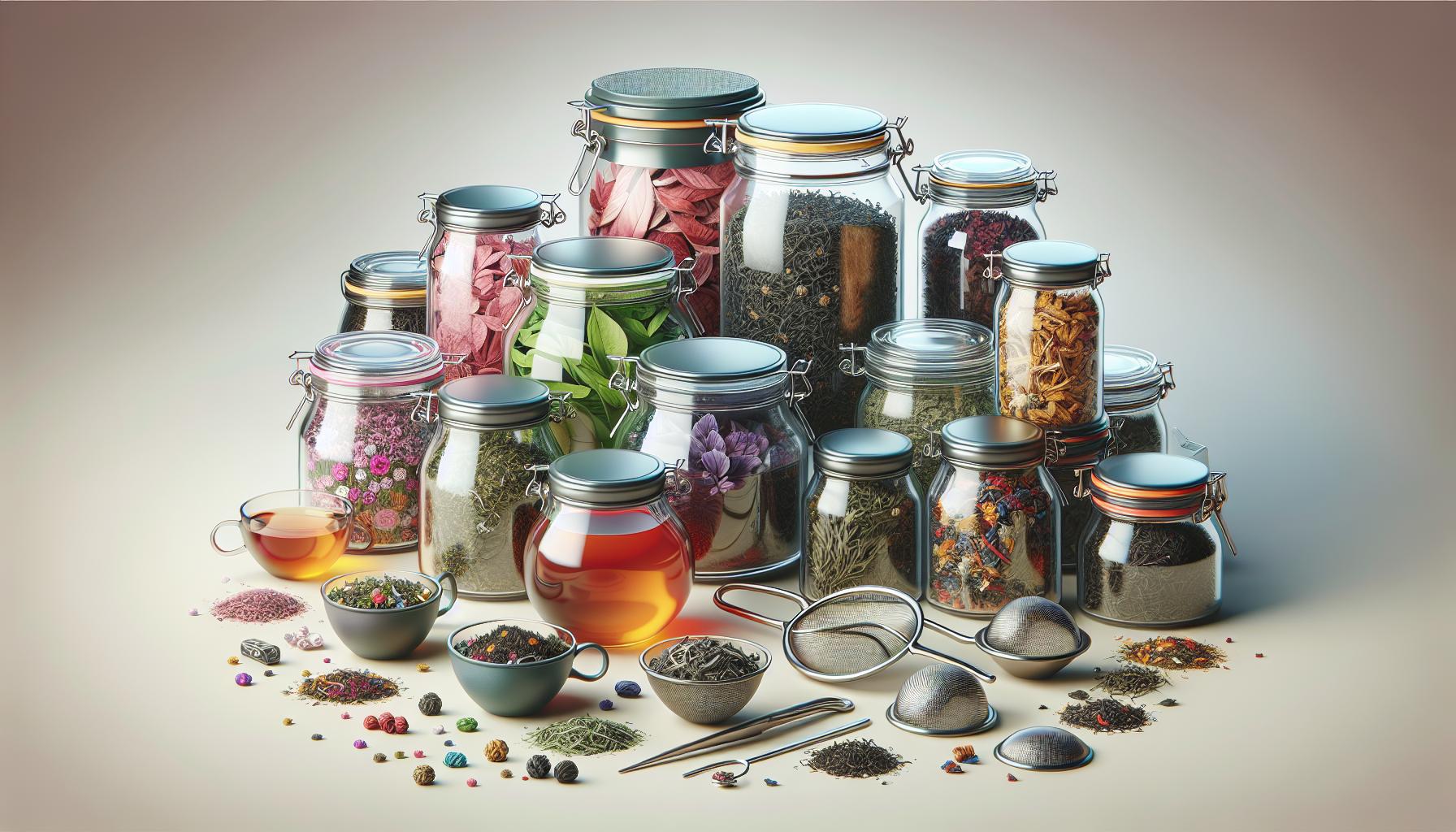
Creating your personalized loose leaf tea blends is just the beginning; now let’s dive into how to store and brew them for the perfect cup of tea every time.
For Beginners: Organizing and Basic Brewing
- Storage: Keep your custom tea blends in airtight containers away from light and moisture.
- Brewing: Start with a teaspoon of your blend per cup of hot water, steep for 3-5 minutes, and enjoy!
For Intermediate Blenders: Enhancing Flavor Profiles
- Storage: Consider using tinted glass jars to maintain freshness and keep flavors intact.
- Brewing: Experiment with different water temperatures and steeping times to tailor the taste to your preference.
- Storage: Vacuum-seal your blends for optimal preservation and label each with details like ingredients and brewing recommendations.
- Brewing: Try cold brewing or using varying tea-to-water ratios to unlock complex flavors in your unique blends.
Conclusion
We’ve covered a range of tips and techniques for creating and enjoying DIY loose leaf tea blends. From beginner basics like proper storage and brewing measurements to intermediate strategies such as experimenting with steeping times and water temperatures, there’s something for everyone to elevate their tea game. Remember to seal blends for freshness, label them with brewing instructions, and explore cold brewing for a refreshing twist. By customizing your own tea combinations, you can unlock a world of flavors and aromas that cater to your unique preferences. So, grab your favorite ingredients, get blending, and savor the delightful experience of crafting your personalized cup of tea.
